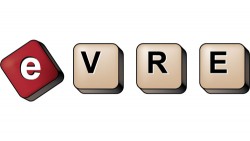Building and Enhancing e-Research Infrastructures with VRE4EIC
eVRE provides a comfortable, homogeneous interface for researches and developers by virtualising access to the heterogeneous datasets, software services and resources of e-RIs. On top of this, it also supports collaboration and communication between users/researchers. The eVRE source code is available on GitHub. The potential of eVRE is demonstrated by the European Plate Observing System (EPOS) and ENVRI+, a Horizon 2020 project bringing together Environmental and Earth System Research Infrastructures, projects and networks. Both EPOS and ENVRI+ are represented in the project, themselves supported by e-Infrastructures such as GEANT, EUDAT, PRACE, EGI, and OpenAIRE. VRE4EIC provides a superset canonical-rich catalog into which information from the distributed heterogeneous e-RI catalogs is imported via converters. It thus provides a homogeneous view over the heterogeneous metadata describing the assets and thus automates findability and accessibility. Access to the catalog is offered via the Metadata Manager component of the reference architecture, encapsulating all operations on the descriptions held in the catalog. The Metadata Manager was included in the architecture of EPOS, enhancing EPOS’ interoperability level. The current state of the art has some interoperability and re-use among research assets but this is usually restricted to a particular domain where local metadata standards are utilised. However, the interoperation usually requires considerable human effort and rarely is (even partially) automated. The VRE4EIC catalog allows homogeneous access across the heterogeneous metadata provided, and thus—progressively—interoperability and re-usability. Building or enhancing a VRE is a complex procedure. The project has produced a series of video tutorials about VREs in general, and the VRE4EIC reference architecture and component services in particular to help researchers and technicians in understanding the principles and aspects of eVRE. The tutorials are available via the project website. VRE4EIC website: https://www.vre4eic.eu/(si apre in una nuova finestra) VRE4EIC tutorials: https://www.vre4eic.eu/tutorials(si apre in una nuova finestra) eVRE on GitHub: https://github.com/vre4eic(si apre in una nuova finestra) The VRE4EIC project has been coordinated by ERCIM.
Parole chiave
Paesi
Greece, France, Italy, Netherlands



